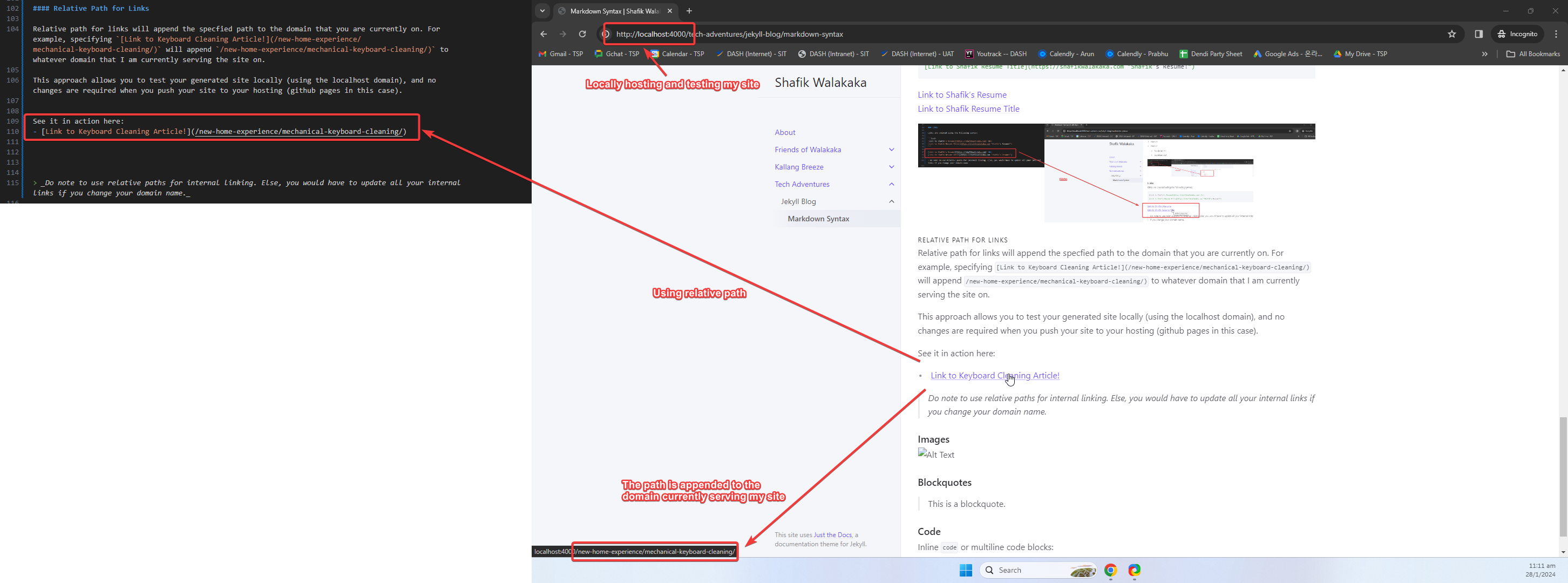Introduction
Hello! Here, we list out all the markdown syntax that would be used to create the Jekyll Powered blog.
Markdown Syntax Summary
Headers
The headers in markdown syntax are specified using the number of hashes #. For example, the Introduction heading in this page is a H1 Heading and the Markdown Syntax Summary is a H2 Heading. See screenshot below for reference:

The full list of headings are available below:
# H1
## H2
### H3
#### H4
##### H5
###### H6
Emphasis
Emphasis can be italic, bold or both (italic and bold). See the screenshot below for reference:

- Italics can be specified using an asterix or underscore on each side
*italic*or_italic_ - Bolds can be specified using two asterix or underscores on each side
**bold**or__bold__ - Bold Italics can be specified using 3 asterix on each side
***bold and italic***
Lists
In markdown syntax, unordered lists are formed using a dash (-), while ordered lists use numbers. Both types of lists can be nested by indenting the child elements under their parent list.

Unordered Lists
Sample snippet for generating unordered list:
- Item 1
- Item 2
- Subitem 2.1
- Subitem 2.2
The above snippet generated the following list in this template:
- Item 1
- Item 2
- Subitem 2.1
- Subitem 2.2

Ordered Lists
Sample snippet for generating ordered list:
1. Item 1
2. Item 2
1. Subitem 2.1
2. Subitem 2.2
The above snippet generated the following list in this template:
- Item 1
- Item 2
- Subitem 2.1
- Subitem 2.2

Links
Links are created using the following syntax:
[Link to Shafik's Resume](https://shafikwalakaka.com) <br>
[Link to Shafik Resume Title](https://shafikwalakaka.com "Shafik's Resume!")
Link to Shafik’s Resume
Link to Shafik Resume Title

Relative Path for Links
Relative path for links will append the specfied path to the domain that you are currently on. For example, specifying [Link to Keyboard Cleaning Article!](/new-home-experience/mechanical-keyboard-cleaning/) will append /new-home-experience/mechanical-keyboard-cleaning/) to whatever domain that I am currently serving the site on.
This approach allows you to test your generated site locally (using the localhost domain), and no changes are required when you push your site to your hosting (github pages in this case).
See it in action here:
Without any changes to the code snippet, I can host and test it locally: 
And without any changes, the same code snippet can be used online too: 
Do note to use relative paths for internal linking. Else, you would have to update all your internal links if you change your domain name.
Images
The syntax for images is as follows:


The above code snippet generates this image:
Similarly, images can also have absolute or relative URL’s. The same principle applies – if referencing local images, use relative path. If referencing images from external sites, use absolute URLs
Blockquotes and Code Blocks
Blockquotes syntax is as follows: > This is a blockquote.
This is a blockquote.
Inline code or multiline code blocks:
def example_function():
print("Hello, World!")
See image below for reference on how it looks behind the scenes: 